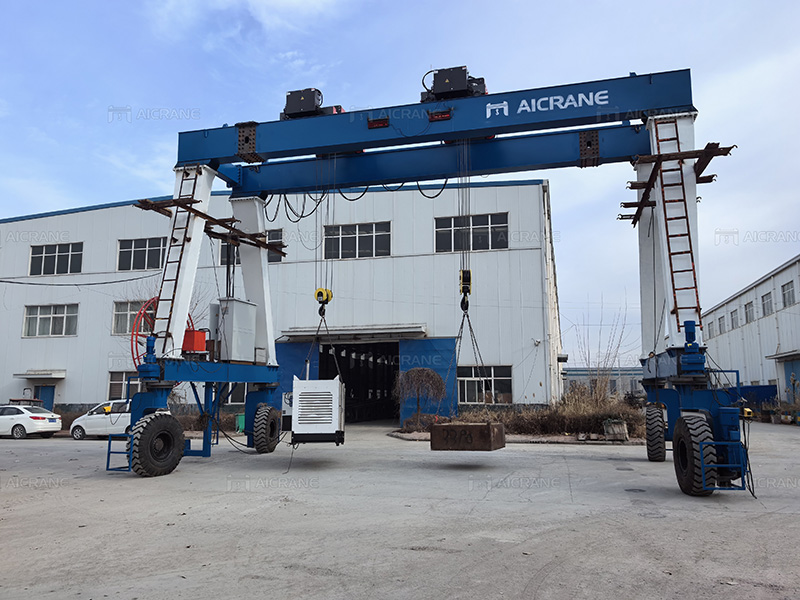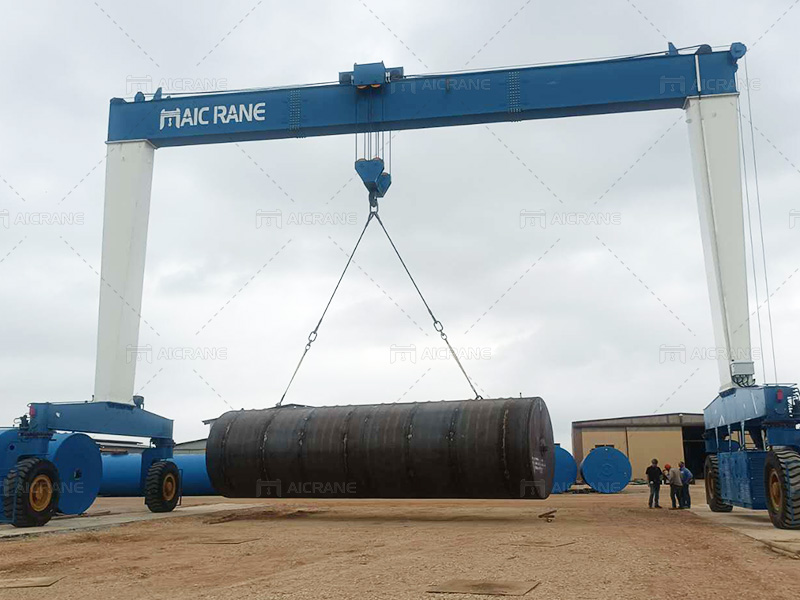Rubber Tyred Gantry (RTG) cranes are essential pieces of equipment in port and container terminal operations, known for their mobility and efficiency in stacking and moving containers. When considering the acquisition of an RTG crane, understanding the cost factors and considerations is crucial for making an informed investment. This article will delve into the various cost components and considerations associated with RTG cranes, providing a comprehensive overview for prospective buyers.

1. Initial Purchase Price
The initial rubber tyred gantry crane price is the most obvious cost factor. This price can vary widely depending on several factors, including:
- Crane Size and Capacity: Larger cranes with higher lifting capacities typically cost more. The choice between a standard RTG crane and a high-capacity model can significantly impact the purchase price.
- Brand and Manufacturer: Reputable brands and manufacturers with a track record of reliability and performance often command higher prices.
- Customization: Custom features, such as specialized spreaders, extended booms, or enhanced control systems, can increase the purchase price.
An RTG crane’s initial cost can range from $1 million to $3 million or more, depending on these factors.
2. Shipping and Installation Costs
Shipping and installation are significant costs to consider. Transporting an RTG crane from the gantry crane manufacturer to the port or terminal involves logistics and handling fees. Additionally, the complexity of installation, including site preparation, assembly, and commissioning, adds to the overall expense. These costs can range from $100,000 to $500,000, depending on the distance and complexity of the installation process.
3. Infrastructure Modifications
RTG cranes require suitable infrastructure for optimal operation. This may involve modifications to the existing terminal or port infrastructure, such as:
- Ground Reinforcement: Ensuring the ground can support the weight and movement of the RTG crane.
- Electrical Upgrades: Upgrading electrical systems to accommodate the crane’s power requirements.
- Track Installation: In some cases, installing tracks or guide paths for the crane’s movement.
The costs for these modifications can vary significantly, but it is not uncommon for them to range from $50,000 to $200,000.
4. Operational Costs
Operational costs are ongoing expenses associated with running an RTG crane. These include:
- Energy Consumption: RTG cranes can be powered by diesel, electricity, or a combination of both (hybrid). The cost of energy will depend on the crane’s power source and the local energy prices. Electric RTGs generally offer lower operational costs compared to diesel-powered ones.
- Maintenance and Repairs: Regular maintenance is crucial to ensure the crane operates efficiently and safely. This includes routine inspections, lubrication, part replacements, and addressing wear and tear. Maintenance costs can range from $50,000 to $150,000 annually.
- Labor Costs: Skilled operators and maintenance personnel are required to operate and maintain the RTG crane. Labor costs will vary based on the local wage rates and the level of expertise required.

5. Technological Enhancements
Modern RTG cranes often come with advanced technological features that enhance efficiency and safety. These may include:
- Automation Systems: Automated systems for remote operation and monitoring can increase efficiency but also add to the initial and ongoing costs.
- Anti-Sway Mechanisms: These mechanisms help stabilize loads, reducing the risk of accidents and increasing operational efficiency. Implementing such systems can add to the initial purchase price.
- Safety Features: Advanced safety features, such as collision avoidance systems, can also increase the overall cost.
Investing in these technological enhancements can improve productivity and safety, but buyers should be prepared for the additional costs associated with these features.
6. Financing and Leasing Options
Financing and leasing options can significantly impact the overall cost of acquiring a mobile gantry crane. Some considerations include:
- Interest Rates: If financing the purchase, the interest rate on the loan will affect the total cost over time. Buyers should shop around for the best rates and terms.
- Lease Terms: Leasing an RTG crane can be a cost-effective alternative to purchasing outright. However, the terms of the lease, including duration, monthly payments, and end-of-lease conditions, will influence the overall cost.
7. Environmental Regulations and Compliance
Compliance with environmental regulations is a crucial consideration. RTG cranes must meet emissions standards and other regulatory requirements, which can involve additional costs for retrofitting or upgrading older models. For example:
- Emissions Control Systems: Installing emissions control systems on diesel-powered RTGs to meet regulatory standards can add to the initial and operational costs.
- Noise Reduction Measures: Implementing measures to reduce noise pollution may also be necessary, depending on local regulations.
8. Resale Value and Depreciation
The resale value and depreciation rate of an RTG crane are important factors to consider in the overall cost analysis. High-quality cranes from reputable manufacturers tend to retain their value better than cheaper alternatives. Buyers should consider the potential resale value when evaluating the total cost of ownership.
9. Training and Certification
Proper training and certification for operators and maintenance personnel are essential for safe and efficient operation. Training programs can be an additional cost but are necessary to ensure compliance with safety standards and regulations. These programs can range from $5,000 to $20,000 per operator, depending on the level of training required.
10. Insurance and Liability
Insurance is a necessary expense to protect against potential risks and liabilities associated with operating an RTG crane. Insurance costs will vary based on factors such as the crane’s value, operational environment, and coverage limits. Comprehensive insurance coverage typically ranges from $10,000 to $50,000 annually.
Conclusion
Acquiring a rubber tyred gantry crane involves multiple cost factors and considerations beyond the initial purchase price. From shipping and installation to operational costs, technological enhancements, and compliance with regulations, each aspect contributes to the overall investment. By understanding these factors and carefully evaluating the long-term costs and benefits, buyers can make informed decisions that ensure the efficiency, safety, and profitability of their port or terminal operations. Investing in a high-quality RTG crane, along with proper maintenance and training, will ultimately yield significant returns in productivity and operational excellence. For more info, visit https://steelmillcranes.com/